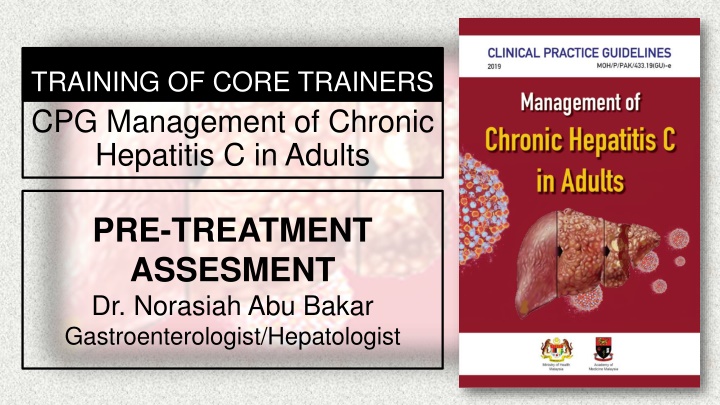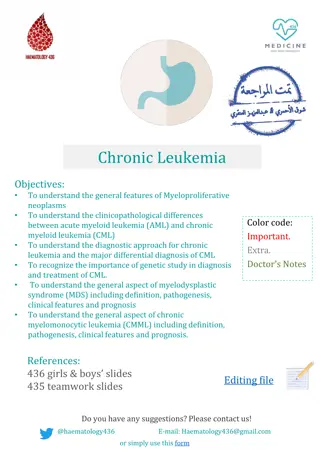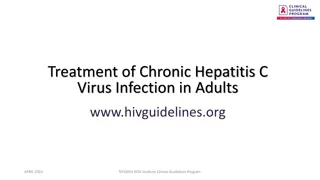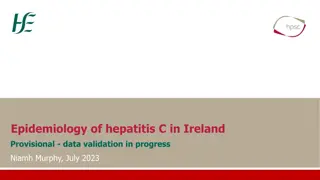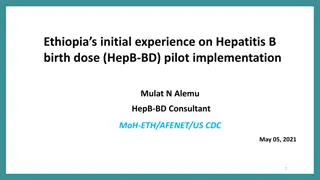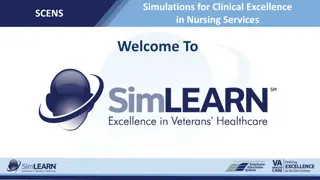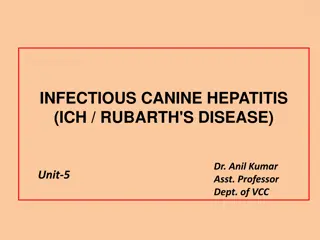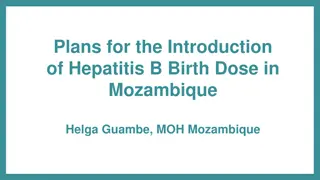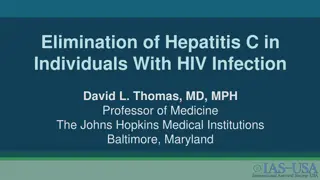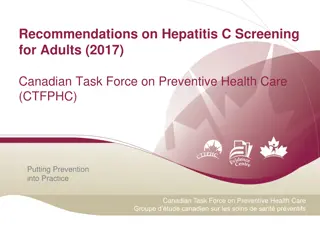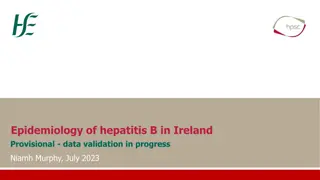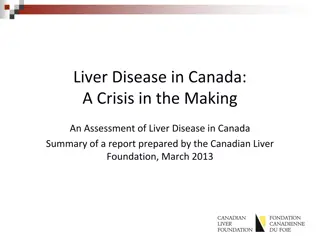Comprehensive Pre-Treatment Assessment for Chronic Hepatitis C in Adults
Core trainers in CPG management of Chronic Hepatitis C in adults must focus on pre-treatment assessment to identify co-morbidities, assess liver status, determine fibrosis severity, and conduct necessary blood investigations. Utilizing non-invasive methods for liver fibrosis assessment is crucial for treatment planning and reducing the reliance on liver biopsy.
Download Presentation

Please find below an Image/Link to download the presentation.
The content on the website is provided AS IS for your information and personal use only. It may not be sold, licensed, or shared on other websites without obtaining consent from the author.If you encounter any issues during the download, it is possible that the publisher has removed the file from their server.
You are allowed to download the files provided on this website for personal or commercial use, subject to the condition that they are used lawfully. All files are the property of their respective owners.
The content on the website is provided AS IS for your information and personal use only. It may not be sold, licensed, or shared on other websites without obtaining consent from the author.
E N D
Presentation Transcript
TRAINING OF CORE TRAINERS CPG Management of Chronic Hepatitis C in Adults PRE-TREATMENT ASSESMENT Dr. Norasiah Abu Bakar Gastroenterologist/Hepatologist
Learning Objectives 1. To identify co-morbidities & assess status of the liver of the patient 2. To assess the severity of liver fibrosis 3. To determine blood investigations need to be sent prior to the treatment 4. To know the non-invasive method of assessing liver fibrosis 2
Pre-treatment Assessment Prior to initiation of treatment, hepatitis C patients must be assessed to identify presence of co-morbidity & to determine cirrhosis status. 3
Blood Investigations The following investigations need to be performed prior to the treatment: full blood count liver function test (LFT) including AST serum creatinine international normalised ratio (for all cirrhotic patients) HIV & hepatitis B surface antigen screening APRI and/or FIB-4 score 4
Non-invasive Methods Accurate assessment on the severity of liver fibrosis is important for prognosticate and treatment planning in HCV patients. Non-invasive methods of assessing fibrosis have been developed to reduce the need for liver biopsy. 5
Non-invasive Methods -2 A systematic review evaluates the ability of non-invasive measures in assessing hepatic inflammation & fibrosis among chronic HCV patients.21 AST to platelet ratio index (APRI) is simple to be used in estimating fibrosis with AUC with a range of 0.87 - 0.89. 6 21. Smith JO et al. Aliment Pharmacol Ther. 2009;30(6):557-76.
Non-invasive Methods -3 For Fibrosis-4 (FIB-4) index, the AUC was 0.765 for differentiating Ishak 0 - 3 from 4 - 6. This was validated in a large cohort study which demonstrated AUC of 0.85 for severe fibrosis & 0.91 for cirrhosis. Transient elastography (TE) distinguished mild/moderate fibrosis from severe fibrosis/cirrhosis with AUC of 0.94. 7
Non-invasive Methods -4 TE has better sensitivity & specificity compared with conventional USG or doppler USG. The AUC increases from stage F1 to F4 liver fibrosis for both TE & US. However, the results are higher in TE.24 The diagnostic accuracy is much better in TE compared with doppler USG in F2 to F4 liver fibrosis. The AUC for TE in F2, F3 & F4 is 0.89, 0.96 & 1.0 respectively.25 TE is available in limited centers whereas MRE is not available in Malaysia. However, once MRE is available, it can be incorporated into the MRI examination. 24. 25. Wang JH et al. J Gastroenterol. 2009;44(5):439-46. Moustafa EF et al. Arab J Gastroenterol. 2017;18(1):6-12. 8
Evaluation of APRI, FIB-4 & TE Note: The values mentioned in Table 1 are based on consensus of both CPG DG & RC. Source: 1. 2. World Health Organization. Geneva: WHO; 2018. Cast ra L et al. J Hepatol. 2009;50(1):59-68 10
Formula 11
Take Home Message Differentiating non-cirrhotic & cirrhotic liver in pre- treatment assessment is important in determining the DAA regime. 12
